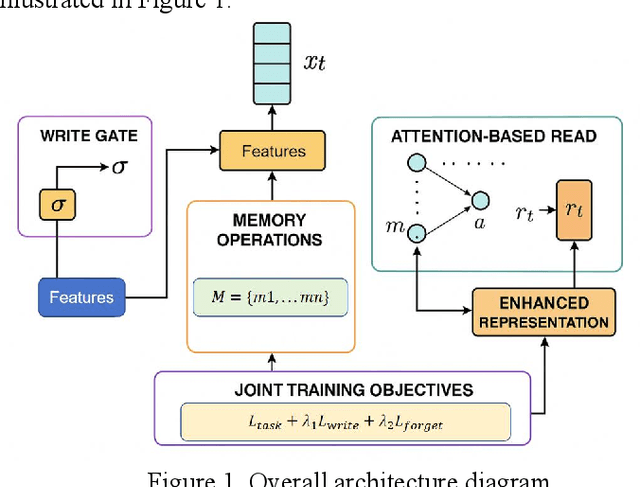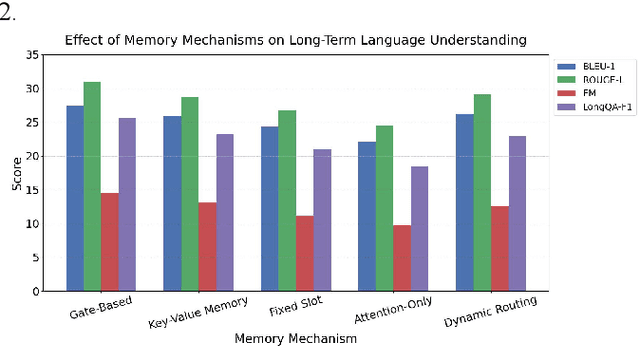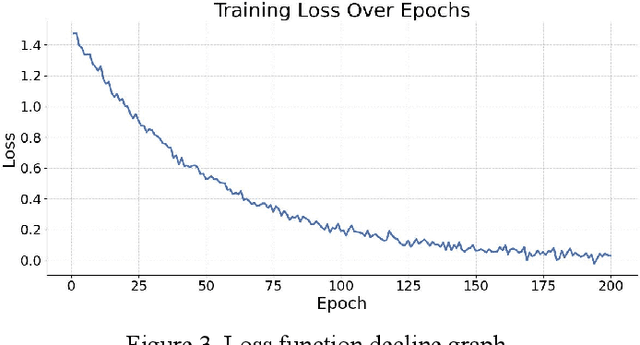Tao Yang
DAMO Academy, Alibaba Group
Self-Forcing++: Towards Minute-Scale High-Quality Video Generation
Oct 02, 2025Abstract:Diffusion models have revolutionized image and video generation, achieving unprecedented visual quality. However, their reliance on transformer architectures incurs prohibitively high computational costs, particularly when extending generation to long videos. Recent work has explored autoregressive formulations for long video generation, typically by distilling from short-horizon bidirectional teachers. Nevertheless, given that teacher models cannot synthesize long videos, the extrapolation of student models beyond their training horizon often leads to pronounced quality degradation, arising from the compounding of errors within the continuous latent space. In this paper, we propose a simple yet effective approach to mitigate quality degradation in long-horizon video generation without requiring supervision from long-video teachers or retraining on long video datasets. Our approach centers on exploiting the rich knowledge of teacher models to provide guidance for the student model through sampled segments drawn from self-generated long videos. Our method maintains temporal consistency while scaling video length by up to 20x beyond teacher's capability, avoiding common issues such as over-exposure and error-accumulation without recomputing overlapping frames like previous methods. When scaling up the computation, our method shows the capability of generating videos up to 4 minutes and 15 seconds, equivalent to 99.9% of the maximum span supported by our base model's position embedding and more than 50x longer than that of our baseline model. Experiments on standard benchmarks and our proposed improved benchmark demonstrate that our approach substantially outperforms baseline methods in both fidelity and consistency. Our long-horizon videos demo can be found at https://self-forcing-plus-plus.github.io/
Learning More with Less: A Dynamic Dual-Level Down-Sampling Framework for Efficient Policy Optimization
Sep 26, 2025Abstract:Critic-free methods like GRPO reduce memory demands by estimating advantages from multiple rollouts but tend to converge slowly, as critical learning signals are diluted by an abundance of uninformative samples and tokens. To tackle this challenge, we propose the \textbf{Dynamic Dual-Level Down-Sampling (D$^3$S)} framework that prioritizes the most informative samples and tokens across groups to improve the efficient of policy optimization. D$^3$S operates along two levels: (1) the sample-level, which selects a subset of rollouts to maximize advantage variance ($\text{Var}(A)$). We theoretically proven that this selection is positively correlated with the upper bound of the policy gradient norms, yielding higher policy gradients. (2) the token-level, which prioritizes tokens with a high product of advantage magnitude and policy entropy ($|A_{i,t}|\times H_{i,t}$), focusing updates on tokens where the policy is both uncertain and impactful. Moreover, to prevent overfitting to high-signal data, D$^3$S employs a dynamic down-sampling schedule inspired by curriculum learning. This schedule starts with aggressive down-sampling to accelerate early learning and gradually relaxes to promote robust generalization. Extensive experiments on Qwen2.5 and Llama3.1 demonstrate that integrating D$^3$S into advanced RL algorithms achieves state-of-the-art performance and generalization while requiring \textit{fewer} samples and tokens across diverse reasoning benchmarks. Our code is added in the supplementary materials and will be made publicly available.
WeChat-YATT: A Simple, Scalable and Balanced RLHF Trainer
Aug 11, 2025Abstract:Reinforcement Learning from Human Feedback (RLHF) has emerged as a prominent paradigm for training large language models and multimodal systems. Despite notable advances enabled by existing RLHF training frameworks, significant challenges remain in scaling to complex multimodal workflows and adapting to dynamic workloads. In particular, current systems often encounter limitations related to controller scalability when managing large models, as well as inefficiencies in orchestrating intricate RLHF pipelines, especially in scenarios that require dynamic sampling and resource allocation. In this paper, we introduce WeChat-YATT (Yet Another Transformer Trainer in WeChat), a simple, scalable, and balanced RLHF training framework specifically designed to address these challenges. WeChat-YATT features a parallel controller programming model that enables flexible and efficient orchestration of complex RLHF workflows, effectively mitigating the bottlenecks associated with centralized controller architectures and facilitating scalability in large-scale data scenarios. In addition, we propose a dynamic placement schema that adaptively partitions computational resources and schedules workloads, thereby significantly reducing hardware idle time and improving GPU utilization under variable training conditions. We evaluate WeChat-YATT across a range of experimental scenarios, demonstrating that it achieves substantial improvements in throughput compared to state-of-the-art RLHF training frameworks. Furthermore, WeChat-YATT has been successfully deployed to train models supporting WeChat product features for a large-scale user base, underscoring its effectiveness and robustness in real-world applications.
G-Core: A Simple, Scalable and Balanced RLHF Trainer
Jul 30, 2025Abstract:Reinforcement Learning from Human Feedback (RLHF) has become an increasingly popular paradigm for training large language models (LLMs) and diffusion models. While existing RLHF training systems have enabled significant progress, they often face challenges in scaling to multi-modal and diffusion workflows and adapting to dynamic workloads. In particular, current approaches may encounter limitations in controller scalability, flexible resource placement, and efficient orchestration when handling complex RLHF pipelines, especially in scenarios involving dynamic sampling or generative reward modeling. In this paper, we present \textbf{G-Core}, a simple, scalable, and balanced RLHF training framework designed to address these challenges. G-Core introduces a parallel controller programming model, enabling flexible and efficient orchestration of complex RLHF workflows without the bottlenecks of a single centralized controller. Furthermore, we propose a dynamic placement schema that adaptively partitions resources and schedules workloads, significantly reducing hardware idle time and improving utilization, even under highly variable training conditions. G-Core has successfully trained models that support WeChat product features serving a large-scale user base, demonstrating its effectiveness and robustness in real-world scenarios. Our results show that G-Core advances the state of the art in RLHF training, providing a solid foundation for future research and deployment of large-scale, human-aligned models.
Seismic Acoustic Impedance Inversion Framework Based on Conditional Latent Generative Diffusion Model
Jun 16, 2025Abstract:Seismic acoustic impedance plays a crucial role in lithological identification and subsurface structure interpretation. However, due to the inherently ill-posed nature of the inversion problem, directly estimating impedance from post-stack seismic data remains highly challenging. Recently, diffusion models have shown great potential in addressing such inverse problems due to their strong prior learning and generative capabilities. Nevertheless, most existing methods operate in the pixel domain and require multiple iterations, limiting their applicability to field data. To alleviate these limitations, we propose a novel seismic acoustic impedance inversion framework based on a conditional latent generative diffusion model, where the inversion process is made in latent space. To avoid introducing additional training overhead when embedding conditional inputs, we design a lightweight wavelet-based module into the framework to project seismic data and reuse an encoder trained on impedance to embed low-frequency impedance into the latent space. Furthermore, we propose a model-driven sampling strategy during the inversion process of this framework to enhance accuracy and reduce the number of required diffusion steps. Numerical experiments on a synthetic model demonstrate that the proposed method achieves high inversion accuracy and strong generalization capability within only a few diffusion steps. Moreover, application to field data reveals enhanced geological detail and higher consistency with well-log measurements, validating the effectiveness and practicality of the proposed approach.
crossMoDA Challenge: Evolution of Cross-Modality Domain Adaptation Techniques for Vestibular Schwannoma and Cochlea Segmentation from 2021 to 2023
Jun 13, 2025Abstract:The cross-Modality Domain Adaptation (crossMoDA) challenge series, initiated in 2021 in conjunction with the International Conference on Medical Image Computing and Computer Assisted Intervention (MICCAI), focuses on unsupervised cross-modality segmentation, learning from contrast-enhanced T1 (ceT1) and transferring to T2 MRI. The task is an extreme example of domain shift chosen to serve as a meaningful and illustrative benchmark. From a clinical application perspective, it aims to automate Vestibular Schwannoma (VS) and cochlea segmentation on T2 scans for more cost-effective VS management. Over time, the challenge objectives have evolved to enhance its clinical relevance. The challenge evolved from using single-institutional data and basic segmentation in 2021 to incorporating multi-institutional data and Koos grading in 2022, and by 2023, it included heterogeneous routine data and sub-segmentation of intra- and extra-meatal tumour components. In this work, we report the findings of the 2022 and 2023 editions and perform a retrospective analysis of the challenge progression over the years. The observations from the successive challenge contributions indicate that the number of outliers decreases with an expanding dataset. This is notable since the diversity of scanning protocols of the datasets concurrently increased. The winning approach of the 2023 edition reduced the number of outliers on the 2021 and 2022 testing data, demonstrating how increased data heterogeneity can enhance segmentation performance even on homogeneous data. However, the cochlea Dice score declined in 2023, likely due to the added complexity from tumour sub-annotations affecting overall segmentation performance. While progress is still needed for clinically acceptable VS segmentation, the plateauing performance suggests that a more challenging cross-modal task may better serve future benchmarking.
Seedance 1.0: Exploring the Boundaries of Video Generation Models
Jun 10, 2025



Abstract:Notable breakthroughs in diffusion modeling have propelled rapid improvements in video generation, yet current foundational model still face critical challenges in simultaneously balancing prompt following, motion plausibility, and visual quality. In this report, we introduce Seedance 1.0, a high-performance and inference-efficient video foundation generation model that integrates several core technical improvements: (i) multi-source data curation augmented with precision and meaningful video captioning, enabling comprehensive learning across diverse scenarios; (ii) an efficient architecture design with proposed training paradigm, which allows for natively supporting multi-shot generation and jointly learning of both text-to-video and image-to-video tasks. (iii) carefully-optimized post-training approaches leveraging fine-grained supervised fine-tuning, and video-specific RLHF with multi-dimensional reward mechanisms for comprehensive performance improvements; (iv) excellent model acceleration achieving ~10x inference speedup through multi-stage distillation strategies and system-level optimizations. Seedance 1.0 can generate a 5-second video at 1080p resolution only with 41.4 seconds (NVIDIA-L20). Compared to state-of-the-art video generation models, Seedance 1.0 stands out with high-quality and fast video generation having superior spatiotemporal fluidity with structural stability, precise instruction adherence in complex multi-subject contexts, native multi-shot narrative coherence with consistent subject representation.
Discriminative Policy Optimization for Token-Level Reward Models
May 29, 2025Abstract:Process reward models (PRMs) provide more nuanced supervision compared to outcome reward models (ORMs) for optimizing policy models, positioning them as a promising approach to enhancing the capabilities of LLMs in complex reasoning tasks. Recent efforts have advanced PRMs from step-level to token-level granularity by integrating reward modeling into the training of generative models, with reward scores derived from token generation probabilities. However, the conflict between generative language modeling and reward modeling may introduce instability and lead to inaccurate credit assignments. To address this challenge, we revisit token-level reward assignment by decoupling reward modeling from language generation and derive a token-level reward model through the optimization of a discriminative policy, termed the Q-function Reward Model (Q-RM). We theoretically demonstrate that Q-RM explicitly learns token-level Q-functions from preference data without relying on fine-grained annotations. In our experiments, Q-RM consistently outperforms all baseline methods across various benchmarks. For example, when integrated into PPO/REINFORCE algorithms, Q-RM enhances the average Pass@1 score by 5.85/4.70 points on mathematical reasoning tasks compared to the ORM baseline, and by 4.56/5.73 points compared to the token-level PRM counterpart. Moreover, reinforcement learning with Q-RM significantly enhances training efficiency, achieving convergence 12 times faster than ORM on GSM8K and 11 times faster than step-level PRM on MATH. Code and data are available at https://github.com/homzer/Q-RM.
Structured Memory Mechanisms for Stable Context Representation in Large Language Models
May 28, 2025



Abstract:This paper addresses the limitations of large language models in understanding long-term context. It proposes a model architecture equipped with a long-term memory mechanism to improve the retention and retrieval of semantic information across paragraphs and dialogue turns. The model integrates explicit memory units, gated writing mechanisms, and attention-based reading modules. A forgetting function is introduced to enable dynamic updates of memory content, enhancing the model's ability to manage historical information. To further improve the effectiveness of memory operations, the study designs a joint training objective. This combines the main task loss with constraints on memory writing and forgetting. It guides the model to learn better memory strategies during task execution. Systematic evaluation across multiple subtasks shows that the model achieves clear advantages in text generation consistency, stability in multi-turn question answering, and accuracy in cross-context reasoning. In particular, the model demonstrates strong semantic retention and contextual coherence in long-text tasks and complex question answering scenarios. It effectively mitigates the context loss and semantic drift problems commonly faced by traditional language models when handling long-term dependencies. The experiments also include analysis of different memory structures, capacity sizes, and control strategies. These results further confirm the critical role of memory mechanisms in language understanding. They demonstrate the feasibility and effectiveness of the proposed approach in both architectural design and performance outcomes.
DASH: Input-Aware Dynamic Layer Skipping for Efficient LLM Inference with Markov Decision Policies
May 23, 2025



Abstract:Large language models (LLMs) have achieved remarkable performance across a wide range of NLP tasks. However, their substantial inference cost poses a major barrier to real-world deployment, especially in latency-sensitive scenarios. To address this challenge, we propose \textbf{DASH}, an adaptive layer-skipping framework that dynamically selects computation paths conditioned on input characteristics. We model the skipping process as a Markov Decision Process (MDP), enabling fine-grained token-level decisions based on intermediate representations. To mitigate potential performance degradation caused by skipping, we introduce a lightweight compensation mechanism that injects differential rewards into the decision process. Furthermore, we design an asynchronous execution strategy that overlaps layer computation with policy evaluation to minimize runtime overhead. Experiments on multiple LLM architectures and NLP benchmarks show that our method achieves significant inference acceleration while maintaining competitive task performance, outperforming existing methods.
 Add to Chrome
Add to Chrome Add to Firefox
Add to Firefox Add to Edge
Add to Edge